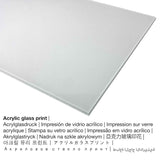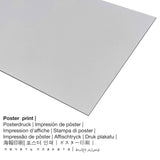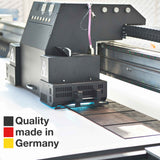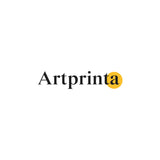Gerard David, 1512 - Ndị fọdụrụ na ụgbọ elu n'Ijipt - mbipụta nka mara mma
Ụtụ gụnyere. Mbupu gbakọrọ na ndenye ọpụpụ.
Ihe nka Ndị fọdụrụ na ụgbọ elu banye Egypt site n'aka nna ochie Gerard david ka akwụkwọ nka ọhụrụ gị
In 1512 Gerard david created this 16th century work of art. The beyond 500 year-old original creation has the following size of 20 x 17 in (50,8 x 43,2 cm). Mmanụ na osisi was used by the European artist as the technique for the work of art. The piece of art forms part of the collection of The Metropolitan Museum of Art. With courtesy of Ụlọ ihe ngosi nka nke Metropolitan, New York, mkpokọta Jules Bache, 1949 (license: public domain). Creditline of the artwork: The Jules Bache Collection, 1949. What is more, the alignment of the digital reproduction is in portrait format with a side ratio of 3 : 4, which means that ogologo bụ 25% mkpụmkpụ karịa obosara. Gerard David was a male artist, illuminator, painter, drawer, miniaturist, whose style can be attributed mainly to Northern Renaissance. The Dutch artist lived for 63 afọ a mụrụ na 1460 na Oudewater, Utrecht Province, Netherlands wee nwụọ na 1523.
Họrọ ngwa ngwaahịa gị
Anyị na-enye ụdị dị iche iche nha na ihe maka ngwaahịa ọ bụla. Nhọrọ ndị a dị maka n'otu n'otu:
- Glass acrylic ebipụtara nwere mmetụta na-egbuke egbuke (ya na mkpuchi iko n'ezie): An acrylic glass print, often referenced as a print on plexiglass, makes the original into magnificient décor and makes a viable alternative option to dibond and canvas fine art replicas. The work of art will be manufactured with the help of modern UV direct print technology.
- Kwaaji: A canvas print, which should not be mistaken with a real canvas painting, is a digital image printed from an industrial printing machine. A canvas has a particular look of three dimensionality. The great advantage of canvas prints is that they are relatively low in weight. That means, it is easy to hang the Canvas print without the help of additional wall-mounts. Therefore, canvas prints are suited for any type of wall.
- Akwụkwọ mmado ebipụtara (akwa akwa akwa): Our poster print is a printed canvas with a slightly roughened texture on the surface. Please keep in mind, that depending on the size of the poster print we add a white margin between 2-6cm around the painting, which facilitates the framing with a custom frame.
- Mbipụta ọla (aluminium dibbond): These are metal prints on aluminium dibond material with an impressive effect of depth. The Aluminium Dibond Print is the perfect introduction to fine art reproductions with aluminum. The white & bright parts of the artpiece shimmer with a silk gloss but without any glow. The colors are luminous, fine details of the print appear crisp, and you can truly notice the matte appearance of the product.
Nkwupụta iwu: We try everything in order to describe our art products as exact as possible and to showcase them visually in our shop. Nonetheless, the colors of the printed materials, as well as the print result might differ slightly from the presentation on the device's monitor. Depending on the screen settings and the quality of the surface, colors might not be printed one hundret percent realistically. In view of the fact that all art reproductions are processed and printed by hand, there might as well be slight variations in the motif's exact position and the size.
Banyere ihe
| Bipụta ngwaahịa: | ọmarịcha nka |
| Usoro mmeghari: | mmeputakwa n'ụdị dijitalụ |
| Usoro nhazi: | Mbipụta UV / dijitalụ |
| Mmalite nke ngwaahịa a: | emepụtara na Germany |
| Ụdị ngwaahịa: | mmepụta ihe na-achọ |
| Ojiji ngwaahịa: | ihe ndozi ụlọ, mgbidi gallery |
| Nhazi nka nka: | usoro eserese |
| Ụdị anya: | 3: 4 |
| Oke onyonyo pụtara: | ogologo bụ 25% mkpụmkpụ karịa obosara |
| Akụrụngwa ị nwere ike ịhọrọ: | Mpempe iko acrylic (nke nwere ezigbo mkpuchi iko), mbipụta ọla (aluminium dibond), mbipụta akwụkwọ mmado (akwụkwọ kwaaji), mbipụta kwaaji. |
| Mbipụta kanvas (akwa akwa n'elu etiti ihe ndọtị) ụdị nha dị iche iche: | 30x40cm - 12x16", 60x80cm - 24x31", 90x120cm - 35x47", 120x160cm - 47x63" |
| Mpempe iko acrylic (nwere ezigbo mkpuchi iko) nha: | 30x40cm - 12x16", 60x80cm - 24x31", 90x120cm - 35x47", 120x160cm - 47x63" |
| Ụdị akwụkwọ mmado (akwụkwọ kwaaji) dị iche iche: | 30x40cm - 12x16", 60x80cm - 24x31", 90x120cm - 35x47" |
| Mbipụta aluminom (aluminium dibond ihe) dị iche iche: | 30x40cm - 12x16", 60x80cm - 24x31", 90x120cm - 35x47" |
| Nhazi mbipụta nka: | na-enweghị etiti |
Ozi nka ahaziri
| Aha nka nka: | "Ndị fọdụrụ na ụgbọ elu n'Ijipt" |
| Nhazi nka nka: | sere |
| Okwu nche anwụ: | nka ochie |
| Century: | 16th narị afọ |
| Afọ nka: | 1512 |
| Afọ nka: | karịa afọ 500 |
| Agba na: | mmanụ n'elu osisi |
| Akụkụ ihe osise izizi: | 20 x 17 n'ime (50,8 x 43,2 cm) |
| Egosiputara na: | Museumlọ ihe ngosi nka nke Obodo |
| Ebe ngosi nka: | New York City, New York, Njikota Obodo Amerika |
| E Nwere na: | www.metmuseum.org |
| Licensedị ikike: | ngalaba ọha |
| Site n'aka: | Ụlọ ihe ngosi nka nke Metropolitan, New York, mkpokọta Jules Bache, 1949 |
| Ebe kredit nke ọrụ nka: | Nchịkọta Jules Bache, 1949 |
Ozi izugbe gbasara onye na-ese ihe
| Aha onye nka: | Gerard david |
| Aha ndị ọzọ: | Davidt Gheeraert, Davidt Gherat, David Gheeraedt, David Gheeraert, Davidt Gerard, David, david gerard, Davidt Gheeraedt, gheeraert david, Davit Gerard, Davit Gheeraedt, Davit Gherat, David Gerard, Gerard David, Davit Gheeraert, David Gherat |
| okike onye nka: | nwoke |
| Nationality: | Dutch |
| Ọrụ nke onye na-ese ihe: | artist, painter, illuminator, drawer, miniaturist |
| Mba onye si: | mba netherland |
| Nkewa onye nka: | nna ukwu ochie |
| Ụdị nka: | Northern Renaissance |
| Ndụ: | 63 afọ |
| Amụrụ n'afọ: | 1460 |
| Ebe amụrụ onye: | Oudewater, mpaghara Utrecht, Netherlands |
| Afọ ọnwụ: | 1523 |
| Obodo ọnwụ: | Bruges, West-Vlaanderen, Flanders, Belgium |
Enwere ikike nwebiisinka © | Artprinta (www.artprinta.com)
Nkọwa mgbakwunye site na weebụsaịtị The Metropolitan Museum of Art (© Nwebiisinka - nke Ụlọ ihe ngosi nka nke Obodo ukwu - www.metmuseum.org)
This composition presents the Flight into Egypt as a continuous narrative. In a tiny background scene the Holy Family emerges from the forest, en route to the contemporary Netherlandish town at the left. In the foreground Mary nurses the Child in a moment of repose on their arduous journey, which the viewer is visually meant to follow. David achieved in this painting a remarkable balance of color and a serene sense of light and atmosphere. His awareness of Italian Renaissance conventions is evident in the pyramidal motif of the Virgin and Child and his use of chiaroscuro to convey the volume of the figures.














